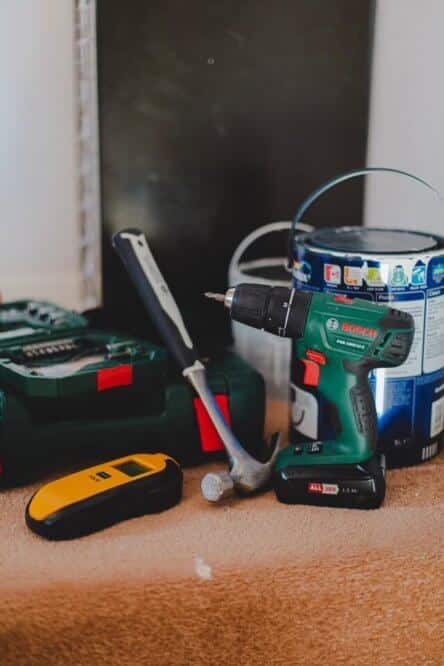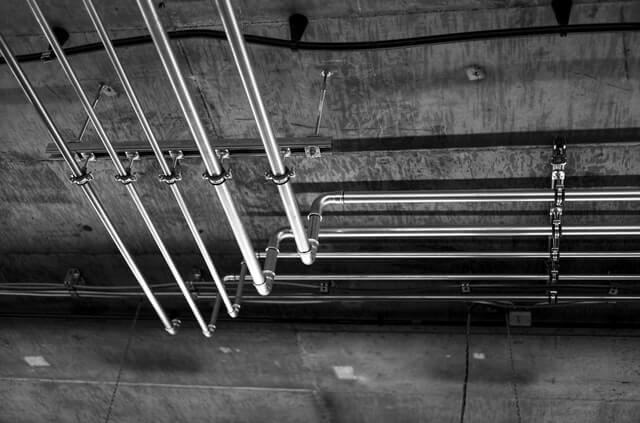Finding brown spots on the ceiling of your bathroom can be a cause for concern. These unsightly marks not only detract from the aesthetics of your bathroom but may also indicate an underlying issue that requires attention.
In this blog post, we will explore the possible causes of brown spots on the ceiling in the bathroom and discuss the necessary steps to address and prevent further damage. By understanding the root causes and implementing effective solutions, you can restore the beauty of your bathroom and ensure the integrity of your home.
Causes of Brown Spots On Ceiling In Bathroom
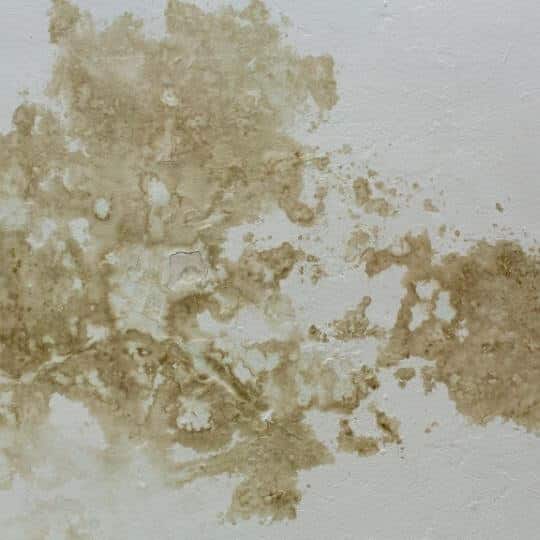
Brown spots on ceiling in bathroom can be hard to ignore.
What you should do first is to determine the cause of the problem. This will help you get rid of the stain entirely, as only painting over it won’t solve this problem.
Let’s take a look at the 2 most common causes of stains on a bathroom ceiling:
- Mold
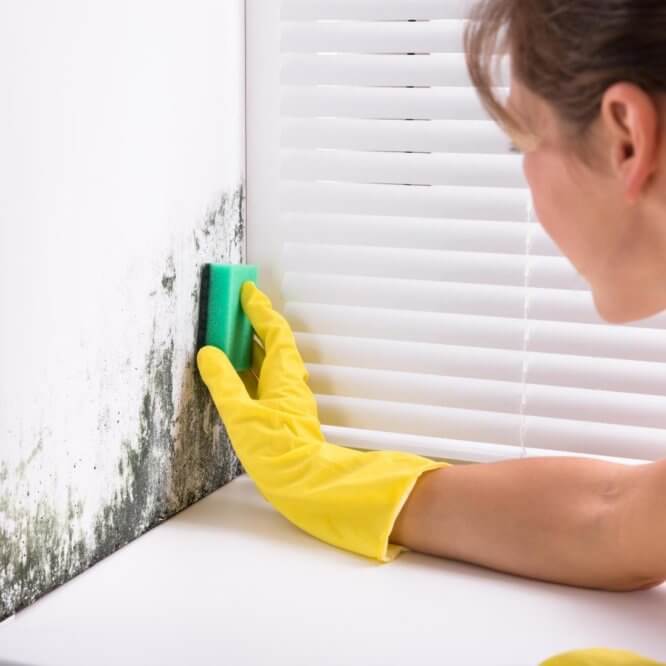
Mold thrives in high humidity environments – such as our bathrooms. The moisture and heat from the shower alone can cause colonies of mildew to form.
If left untreated, mold grows and spreads rapidly, and before you know it, you have brown spots on ceiling in bathroom!
This can especially be the case if there is no window or other proper ventilation inside the bathroom. Lack of ventilation equals prolonged periods of surfaces inside your bathroom being wet.
If, however, your bathroom is properly ventilated, there are probably some areas and spots in your bathroom left unnoticed. These are the areas where water gets stuck easily but doesn’t evaporate just as easily e.g. near the shower.
There are approximately 12 common molds in homes, but most of them appear in similar conditions.
Molds like Alternaria, Ulocladium, and Stachybotrys are among those that can be found in the bathrooms.
- Alternaria appears in damp areas around the house in the form of brown or dark green spots. It’s the most common allergen in the world.
- Ulocladium grows on wet surfaces, or those exposed to water frequently e.g. your ceiling due to water damage. It’s mostly black to brown, and it can cause health problems like allergies, fever, and even skin infections
- Stachybotrys, known as “black mold”, thrives in high humidity areas. It can cause difficulties with breathing, fever, headaches, and even neurological problems in children.
As you can see, the health problems mold can cause are nothing to joke with. Also, molds are hard to distinguish one from another.
But one is for sure – if you find that the stain has spots and is varying in color density, it’s most likely mold.
- Water mineral content
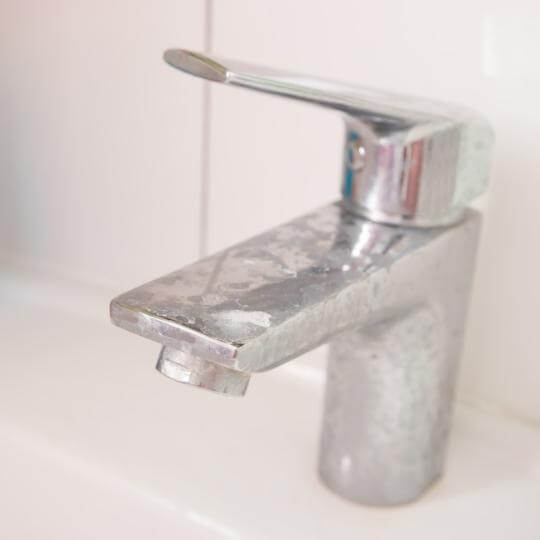
Hard water is full of dissolved minerals, such as calcium and magnesium. When this water comes in contact with a surface, it evaporates leaving deposits of those minerals behind. [1]
Since you’re dealing with the brown spots on ceiling in bathroom, it’s most likely from an iron buildup. Yellow, reddish, or even brown water that smells like rotten eggs, is a dead giveaway of iron contamination.
However, in some cases, iron contamination is not as noticeable. One may only notice it when yellow or brown stains start to appear – on clothes, in the shower, on dishes, and everything else coming in contact with it.
The contaminated water, especially the one with excess iron, can create a stain on the ceiling in two different ways.
The first case includes condensation – hot water droplets from the shower gathering across the cold ceiling. When this water evaporates, you are left with a reddish or brown stain.
This second case includes a stain forming due to water damage above your ceiling. A brown or yellow stain that is not wet indicates a leaky roof or pipe problem.
Water seeping down from the burst pipe can eventually create a brown stain on your bathroom ceiling.
Water contaminated with excess iron can have a profoundly negative impact on your health, not only cause a brown stain. This is why it’s important to test for iron in water first. [3]
Finally, the ceiling may have become brown because water dripping on it has activated the surfactants in the paint.
Surfactants are a reddish/brown ingredient added to paint to make it adhere better. When exposed to water, paint can leak surfactants, resulting in a brown stain. [4]
Getting Rid of Brown Spots On Ceiling In Bathroom
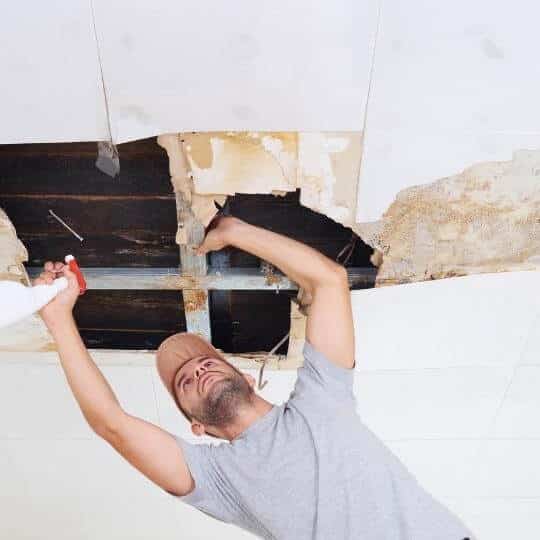
Let’s say that the stain on your ceiling is mold.
Your next step is to tackle the problem of heightened moisture or water seepage that resulted in mold forming. Only after that, it will make sense to remove mold physically.
To remove the mold, make the cleaning solution from white vinegar, hydrogen peroxide, and baking soda. Wearing gloves, use a brush to scrub the mold and rinse thoroughly. [5]
But, let’s say the brown spots on ceiling in bathroom are not mold.
That means that heightened moisture might not be the cause of the stain at all. You probably just need to locate the water damage above the ceiling and repair it.
In this case, you should follow a Step-By-Step guide for repairing a leak in the ceiling. This will help you locate a leak in the roof or your home piping system.
After fixing the damage, simply clean the stain with bleach. Make sure to use protective gloves and goggles.
Then, after removing the stain, wipe the damp area with a cloth or a sponge. When it completely dries, you can simply repaint it.
Preventing Brown Spots On Ceiling In Bathroom
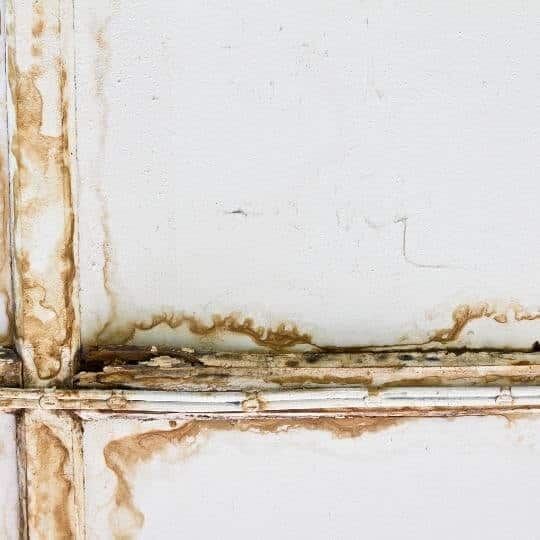
The best way to tackle any problem is to prevent it from even happening.
However, after already having this problem, you may have learned some important lessons. Some of them include:
- Installing proper ventilation systems is crucial for preventing heightened moisture for prolonged periods of time
- Incorporating an annual inspection of your roof and piping system can be of utmost importance to prevent any water damages
- Never ignore the mold- it has detrimental effects on people’s health and should be removed instantly
- A brown spot may be indicating some harmful elements in the water. For your safety and better health, it’s best to test for iron in the water
Ensuring your home is a safe space free of harmful elements should be at the top of your priority list. That’s why you should make sure to include these habits in your house maintenance routine.
Read Also: Should I Buy House With Polybutylene Pipes
FAQ
- What are other causes other than mold and hard water elements?
Other causes of brown spots on ceiling in bathroom include a damaged roof or pipes. If you find it hard to locate the source of the water damage, it may be best to phone a plumber.
- What is the cause of water seeping through walls?
This problem may be a result of condensation. More frequently, it’s a case of damaged piping systems behind the walls or improper caulking of bathroom fixtures.
- Is mold on the ceiling always brown?
No, it’s not. Mold can appear in many shapes and colors, but mostly in black, brown, green, or bluish. This can also depend on the color of your walls.
- Why is my bathroom ceiling paint cracking?
A bathroom ceiling paint mostly cracks and peels off due to being exposed to moisture. Make sure to ventilate your bathroom properly to prevent or stop this.

Michael Davis is a heating & plumbing expert who currently works as independent contractor in SC. He also writes for Plumbertip.
For almost 10 years he worked on various plumbing tasks across South Carolina.
